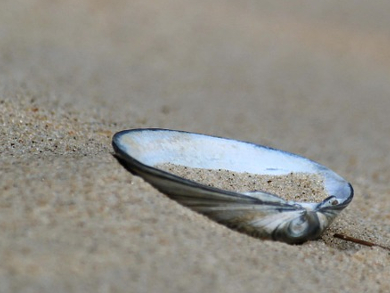Hundreds of thousands of bacteria live on every grain of sand in the sea. This is ten to a hundred times as many as previously thought. This reveals the analysis of grains from the southern North Sea. David Probandt and colleagues, Max Planck Institute for Marine Microbiology, Bremen, Germany, have recovered sand grains from the seabed off Helgoland and analyzed them individually by DNA analysis for their colonization with bacteria. On only a single grain of sand live between 10,000 and 100,000 microorganisms.
The bacteria do not evenly colonize the grains of sand. The microbes colonize the hollows and more sheltered areas of the grains, where they are well protected when the grains of sand are swirled around by the sea water and rub against each other. The average distance between any two cells on a sand grain in protected areas was 0.5 ± 0.7 μm and, therefore, 100-fold shorter than the average distance between cells in the water column
But not only the number, but also the diversity of the bacteria impresses. Thousands of different types of bacteria were found on every single grain of sand. Some species and groups of bacteria were found on all investigated grains of sand, others were sporadic. Overall, representatives of almost all bacterial groups and functional variants can be found.
The sand-loving bacteria play a significant role in the marine ecosystem and the global material cycles. For example, as these bacteria process carbon and nitrogen from seawater and in-flowing rivers, sand acts like a huge cleansing filter.
- Microbial life on a sand grain: from bulk sediment to single grains,
David Probandt, Thilo Eickhorst, Andreas Ellrott, Rudolf Amann, Katrin Knittel,
The ISME J. 2017.
https://doi.org/10.1038/ismej.2017.197




